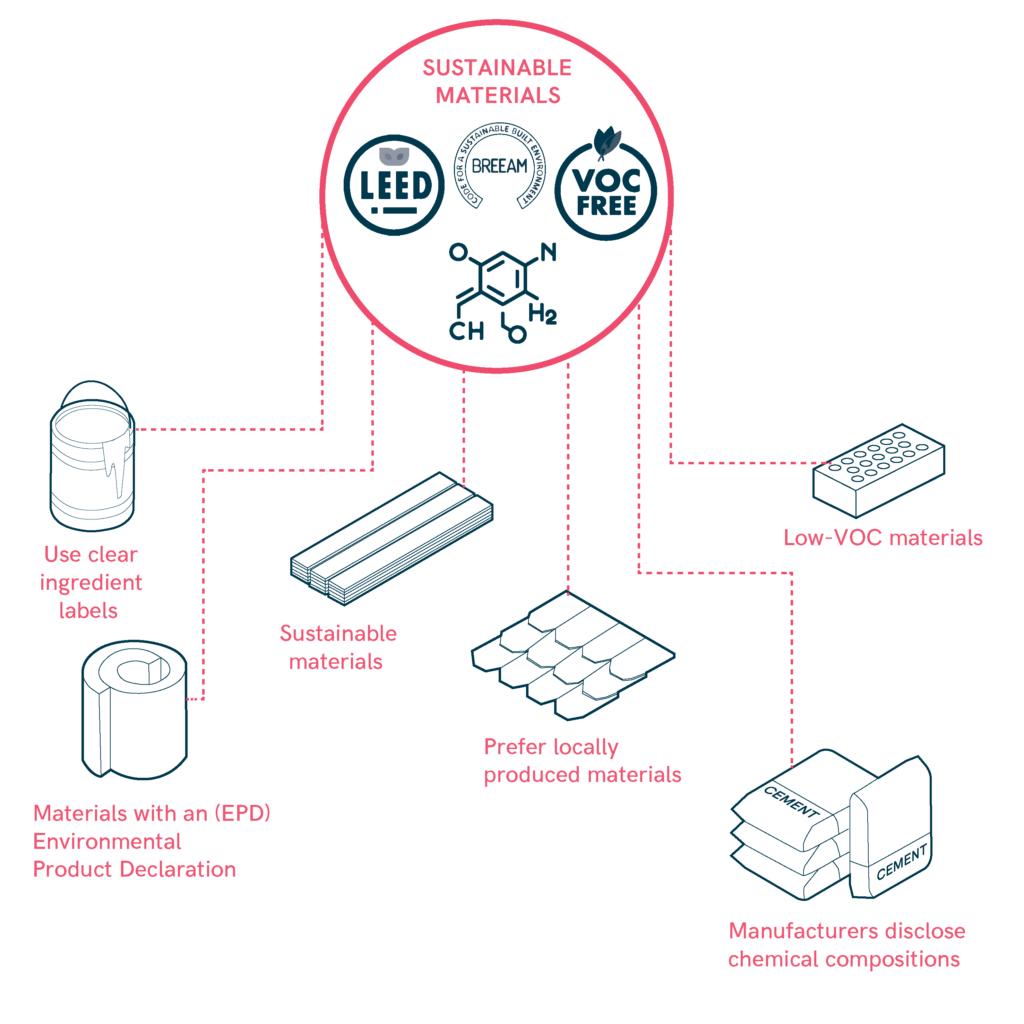Sustainable Materials
Selecting sustainable materials is key to creating environmentally responsible spaces. By using low-VOC, certified materials and assessing their lifecycle impact, we reduce the environmental footprint. Transparent labeling and local sourcing further align with EU regulations. These efforts ensure healthier, eco-friendly indoor environments that benefit both occupants and the planet.

- Use low-VOC materials to maintain air quality and comply with EU environmental standards.
- Select certified sustainable materials (e.g., LEED, Cradle to Cradle) to support eco-friendly practices.
- Choose materials with an Environmental Product Declaration (EPD) to assess their lifecycle impact.
- Ensure manufacturers disclose chemical compositions for transparency in line with EU regulations.
- Use clear ingredient labels to comply with EU guidelines for transparency and accessibility.
- Prefer locally produced materials to reduce environmental impact and comply with EU construction regulations.
Sources
- https://accessible-eu-centre.ec.europa.eu/content-corner/digital-library/en-172102021-accessibility-and-usability-built-environment-functional-requirements_en
- https://breeam.es/
- https://www.usgbc.org/leed
- https://evalore.es/servicio/certificaciones-medioambientales/
- https://www.codigotecnico.org/pdf/Documentos/SUA/DccSUA.pdf
- https://universaldesign.ie/built-environment/building-for-everyone/building-for-everyone-full-series
- Carers
- Children
- Cognitive
- Cognitive abilities
- Decolonial perspective
- Digital
- Digital barrier
- Enviroment
- Environmental
- Gender and generations
- Gender perspective
- Hearing impairment
- Low-education
- Low-income
- Older people
- Other
- Physical abilities and features
- Sensory and Physical
- Socioeconomic
- Visual impairment